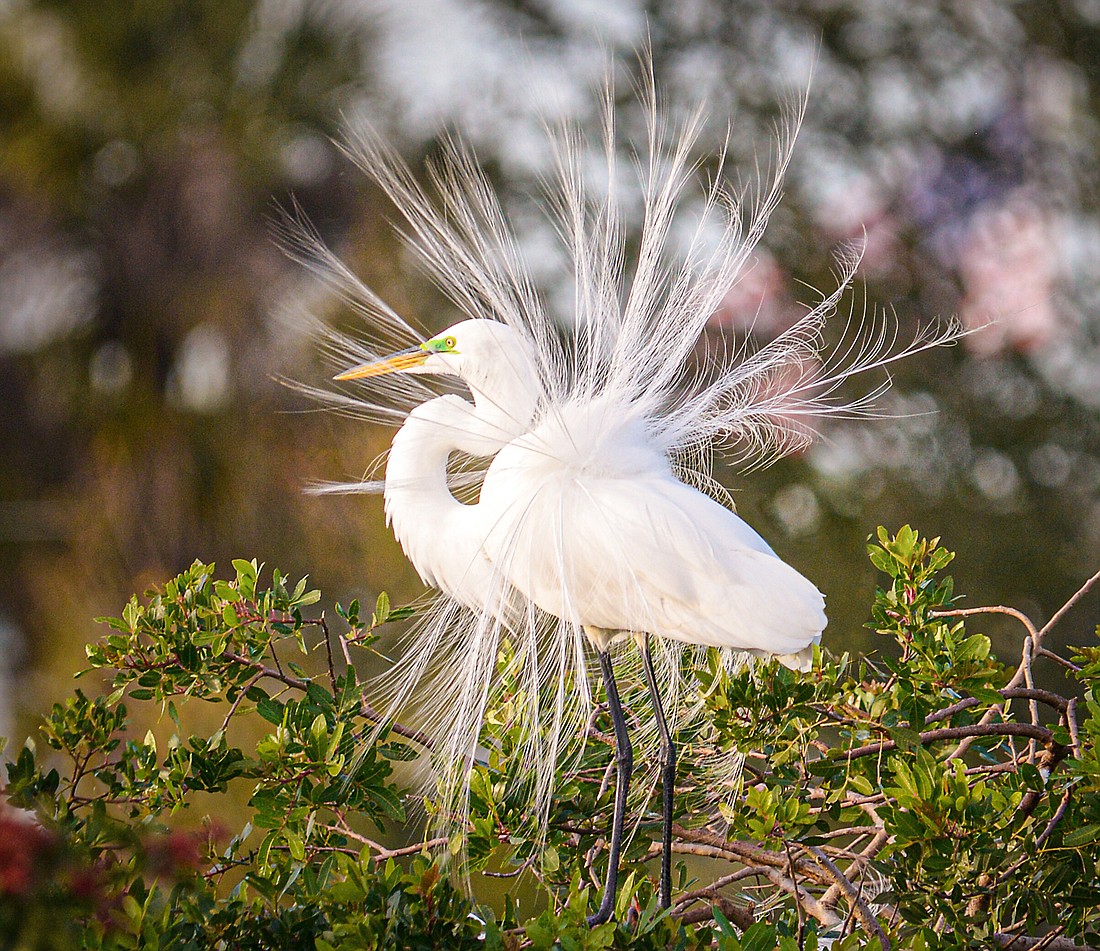- December 12, 2025
-
-
Loading

Loading

Tall, white and graceful, and one of our largest wading birds, great egrets forage for fish and aquatic invertebrates in and near the water, stealthily waiting for prey to come within range of a their dagger-like yellow bills.
But you'll also see them on land, still as statues, instinctively stalking amphibians, reptiles and other small animals.
Like their smaller cousins the snowy egrets, during breeding season, great egrets grow silky plumes from their back, called aigrettes, which they hold up during stunning courtship displays.
The aigrettes of a great egret can grow up to 4 1/2 feet long.
In the late 1880s, when women's hats adorned with bird feathers became popular, these
beautiful aigrettes were in very high demand. Plume hunters descended on Florida's large mangrove nesting colonies, slaughtering egrets by the thousands, and leaving chicks to die.
It was estimated that 5 million to 15 million American birds were killed annually to supply the millinery trade. Great egrets, and many other birds, were nearly driven to extinction.
Appalled by the widespread slaughter of birds in the name of fashion, two Boston socialites, Harriet Hemenway, and her cousin Minna Hall, persuaded their friends to boycott the trade and worked to urge other women to do the same. Ultimately, their efforts gave rise to legislation protecting birds, and also led to the creation of the National Audubon Society, which is dedicated to conservation of birds and their habitats.
Continued activism created momentum for passing the Migratory Bird Treaty Act in 1918. Once protected, great egret populations recovered. And not surprisingly, the great egret, an inspiring grassroots conservation success story, ultimately became the symbol of the National Audubon Society.
Save our Seabirds is a non-profit organization whose mission is to rescue, rehabilitate, and release sick and injured wild birds. Follow @SaveOurSeabirds to learn more about our birds.